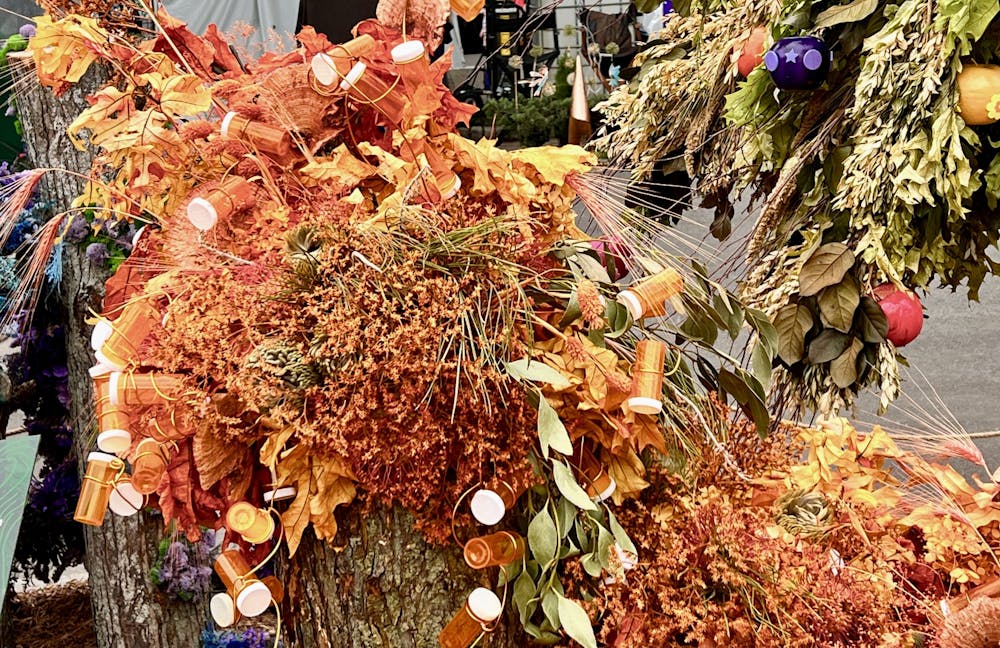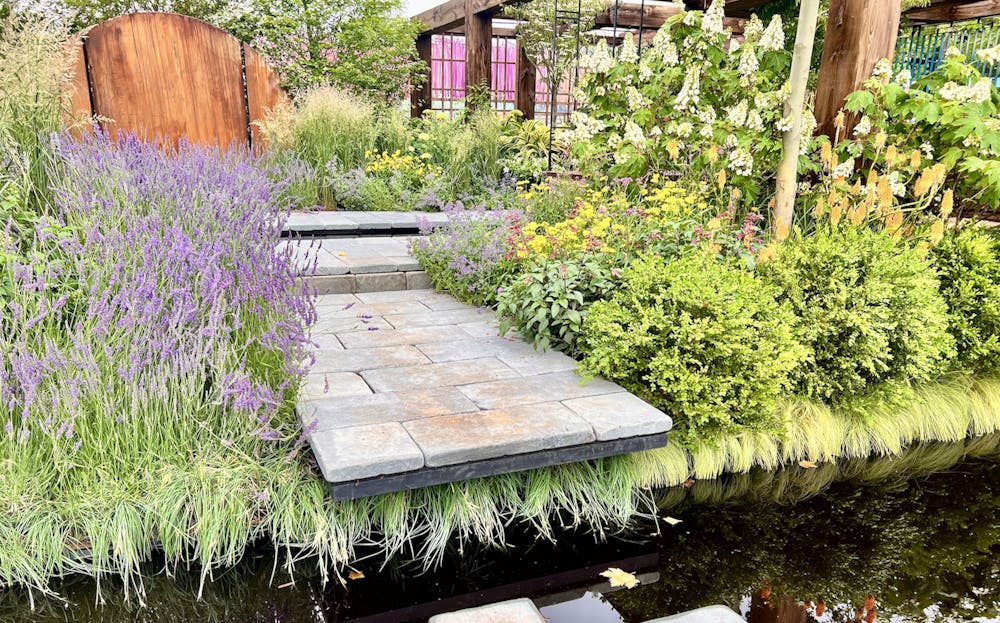On the first warm day of 2020, I rode my bike to Franklin D. Roosevelt Park, or as Philly natives call it, “The Lakes.” At Broad Street and Pattison Avenue, I followed the gravelly, soiled path that faded into a vast grassy lawn (it was once a golf course) but was now undoing itself into a knee–high meadow of yellow and purple weeds after the city shut down. I would sit under the same tree each day, kicking some leftover golf balls or watching groundhogs peek through the islands of trees, just waiting for a person to pass. During the first week of June 2022, the abandoned golf course that recently became “the South Philly Meadows” was gated to prepare for the hundreds of people expected there for the annual Philadelphia Flower Show.
Founded in 1829, the Philadelphia Flower Show is the nation’s oldest horticultural event, once held at the Masonic Hall across from City Hall. Recently, its home was the Pennsylvania Convention Center, but as indoor mandates prevented this, the show found a new venue in my neighborhood park that always felt forgotten. The PHS Philadelphia Flower Show’s theme this season was “In Full Bloom,” a clever ode to the community finally experiencing the event in its entirety since the pandemic’s limitations. However, it holds another meaning devoted to expanding both environmental and personal sustainability.
I already smelled the garden from across the street. I finally stepped under an archway hung with chandeliers of blood–orange flowers, accompanied by the familiar sounds of a fountain and the unfamiliar ones of the live band. Each submission to the competition—of floral arrangements, gardening presentations, and more—was infused with some recognition of the city’s challenges of isolation.
An arrangement by Renee Tucci included a bush of orange flowers, but upon second glance, was also accented with neon pill bottles conveying the benefits of nature on the mind. Or another, where students of Walter B. Saul High School, an institution known for incorporating agricultural practices into its curriculum, created the skeleton of a bedroom to show the experience of virtual classes, complete with ivy–covered stained glass windows. The most photogenic one was the American Institute of Floral Designers’ “Warrior Wings” made of dried petals and feathery vines, enforcing the message of resilience.

Beyond the beautiful floral concepts, the other half of the PHS Philadelphia Flower Show was a flea–market–like festival of small local businesses. Some sold jewelry made from plants while others offered sugar sacks repurposed into tote bags. Shovels and lawn mowers for your own gardening were on display in the backdrop of FDR Park’s greenery that hides the surrounding urban highways. One must–see was the “Artisan Row,” a tent covered in oriental rugs and stray leaves. Here, people constructed flower crowns out of wires and mixed their own scents into homemade candles.
However, even after the tunnels of eucalyptus mist and curtains of orchids are taken down, the Philadelphia Horticultural Center plans to renovate FDR Park into the eco–paradise it’s been waiting for. According to them, “the Green Team will focus on waste diversion, sustainable disposal activities, and resource conservation.” At 348 acres large, FDR Park serves as a habitat of lagoons and creeks that will finally be preserved—through practices intended to combat climate change. For example, the park’s wetlands will be fortified into “natural sponges” to prevent flooding, and its overgrown areas are being converted into outdoor social spots to invite more families to find fun in green spaces.
It was about time the PHS Philadelphia Flower Show made its way outside, but come next season, the 2023 show will be returning to the Pennsylvania Convention Center. Nonetheless, its historical imprint is outliving the week with the hope of Philadelphia blossoming into an environmentally conscious city.

